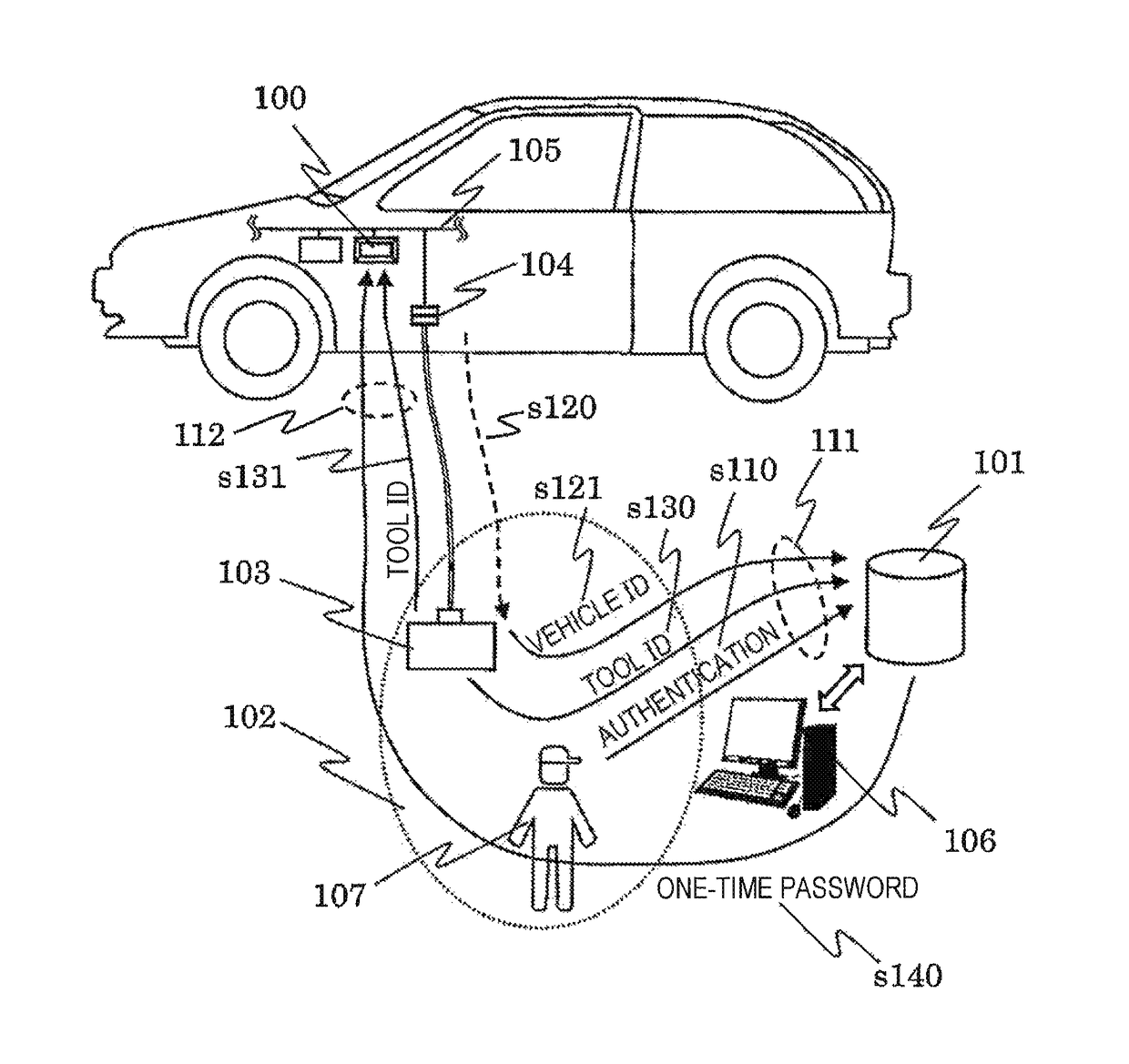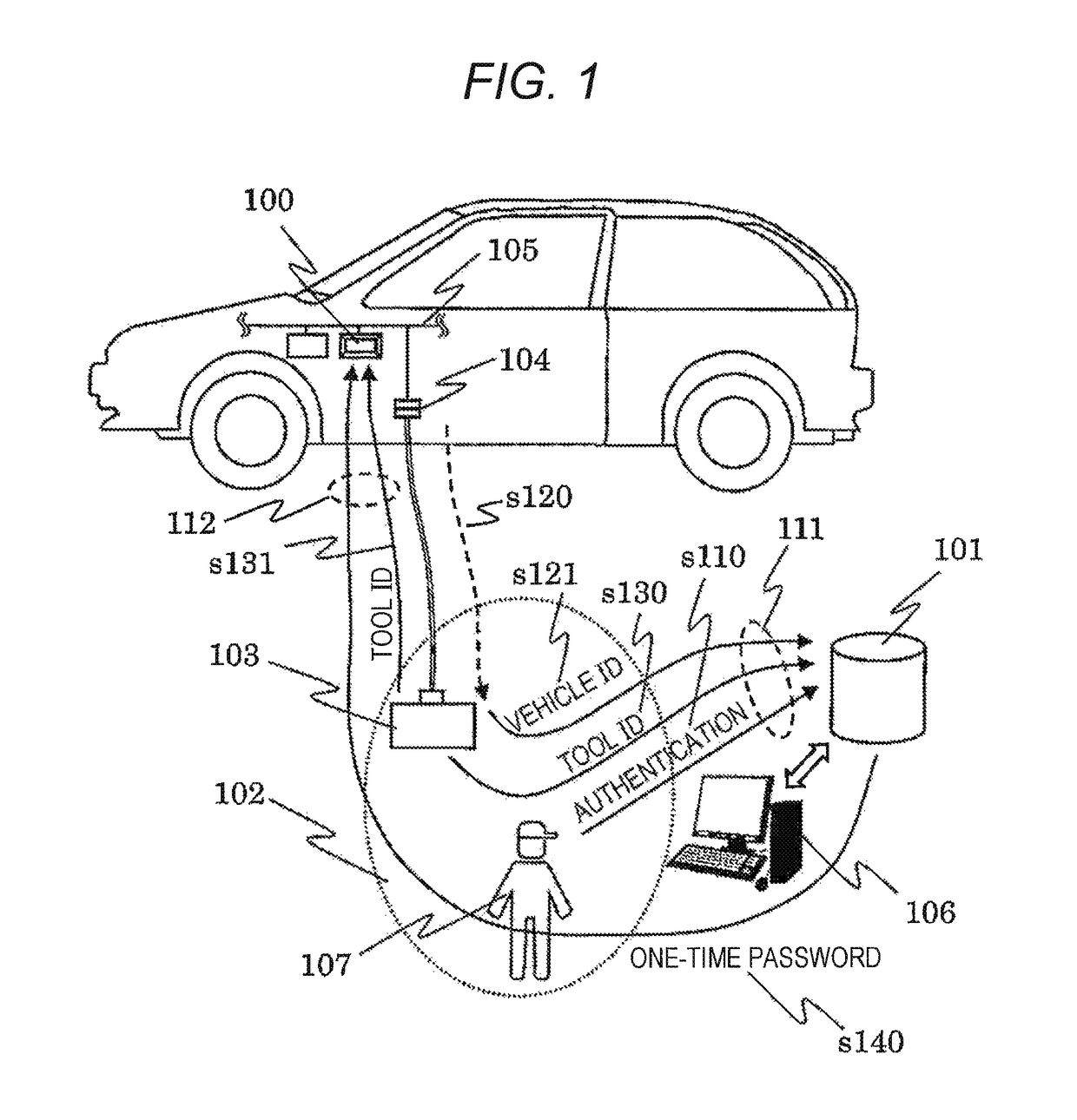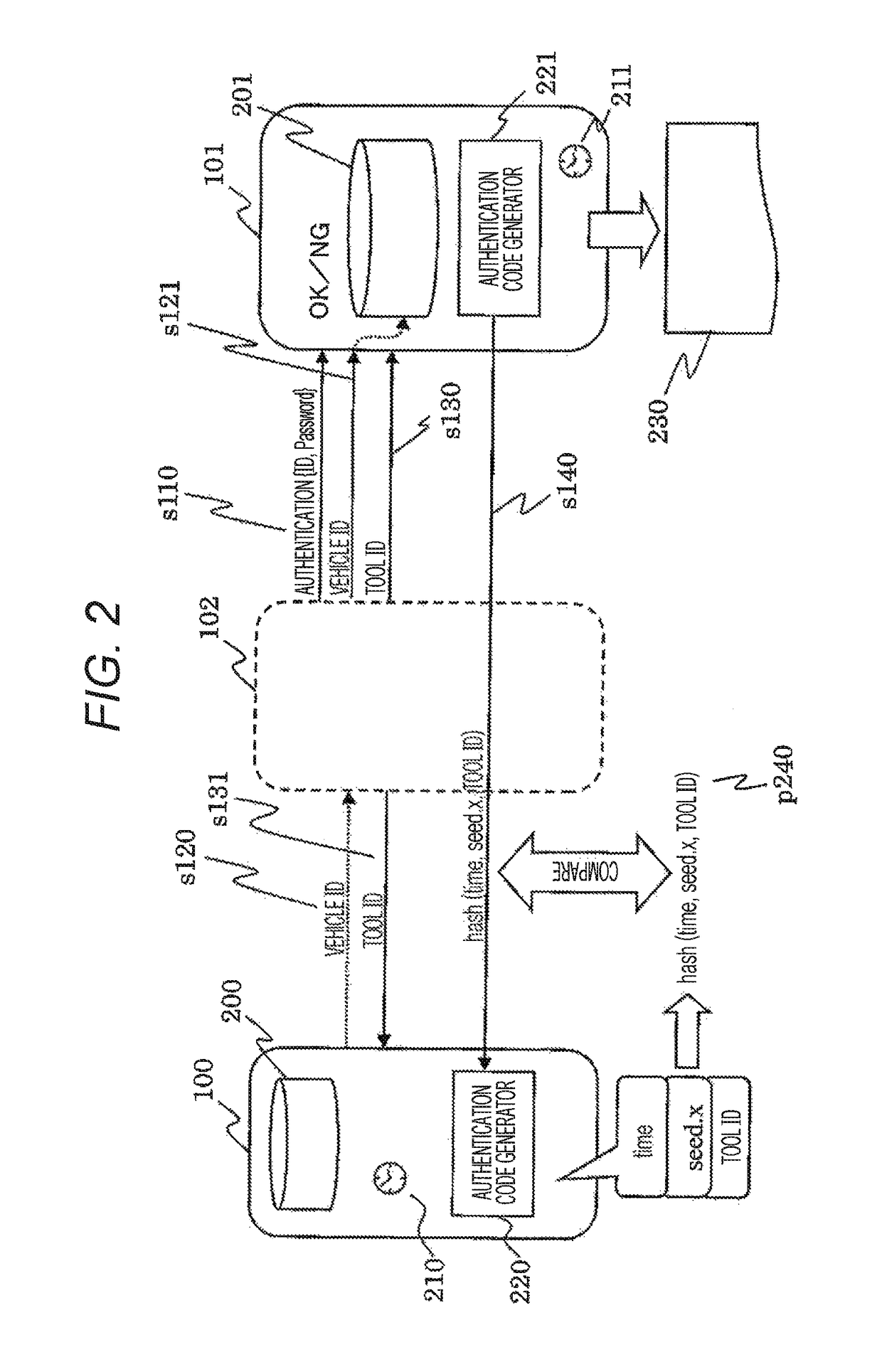Authentication system and car onboard control device
a technology for operating terminals and control devices, applied in the direction of digital transmission, securing communication, instruments, etc., can solve the problems of easy change, affecting the operation of the vehicle, affecting the safety of the vehicle, etc., and achieve the effect of suppressing the risk of being abused
- Summary
- Abstract
- Description
- Claims
- Application Information
AI Technical Summary
Benefits of technology
Problems solved by technology
Method used
Image
Examples
first embodiment
[0020]FIG. 1 is a view illustrating a configuration of an authentication system according to a first embodiment of the present invention.
[0021]An electronic control unit 100 is a so-called built-in type electronic control device referred to as an ECU that is connected to an in-vehicle network 105 such as a controller area network (CAN) and that controls a vehicle by sending and receiving data to and from another ECU.
[0022]The maintenance tool 103 is capable of connecting to the in-vehicle network 105 through a connector 104 for connection. The connector 104 for the connection may be directly diverged from the in-vehicle network 105 or may be provided through an in-vehicle communication gateway (not illustrated) from a security consideration.
[0023]In a conventional method of authenticating the maintenance tool 103, in general, the ECU 100 and the maintenance tool 103 are authenticated one on one. However, in such case, information required for authentication is stored inside the main...
second embodiment
[0062]In the first embodiment, the clocks 210 and 211, which are synchronized to each other, are used as the changing code generation sources that generate the changing codes being changed in synchronization between the ECU 100 and the authentication server 101. In a second embodiment of the present invention, in place of the clocks 210 and 211, received data that is received by the ECU 100 and the authentication server 101 in a synchronized manner may be used. As one example of the received data of the second embodiment, it is possible to use data regularly distributed in a road-to-vehicle communication such as intelligent transport systems (ITS) as a common knowledge.
[0063]FIG. 4 is a sequence diagram illustrating operation for authenticating a maintenance tool 103 by an authentication system according to the second embodiment. In FIG. 4, authentication code generators 220 and 221 use received data 410 and 411 in place of the time of the clocks 210 and 211. Thus, both of the authe...
third embodiment
[0066]In a third embodiment of the present invention, as a changing code that changes being synchronized between an ECU 100 and an authentication server 101, the number of times authentication processing is carried out is used in place of clocks 210 and 211. That is, authentication code generators 220 and 221 apply a Hash function Hash ( ) superimposingly on an initial value init.x of a passcode every time the authentication processing is carried out, and a value obtained as a result is used in place of the time: time and the passcode seed.x of the first embodiment.
[0067]In the third embodiment, the authentication code generators 220 and 221 use {Hash (init.x)} ^n in place of the time: time and the passcode seed.x of the first embodiment. This is equivalent to obtaining the following value: {Hash (init.x)} ^n≡Hash (Hash ( . . . Hash (init.x) . . . )) when an initial value of the passcode is init.x, and the number of times of authentication is n. This value is equivalent to a value o...
PUM
 Login to View More
Login to View More Abstract
Description
Claims
Application Information
 Login to View More
Login to View More - R&D
- Intellectual Property
- Life Sciences
- Materials
- Tech Scout
- Unparalleled Data Quality
- Higher Quality Content
- 60% Fewer Hallucinations
Browse by: Latest US Patents, China's latest patents, Technical Efficacy Thesaurus, Application Domain, Technology Topic, Popular Technical Reports.
© 2025 PatSnap. All rights reserved.Legal|Privacy policy|Modern Slavery Act Transparency Statement|Sitemap|About US| Contact US: help@patsnap.com



